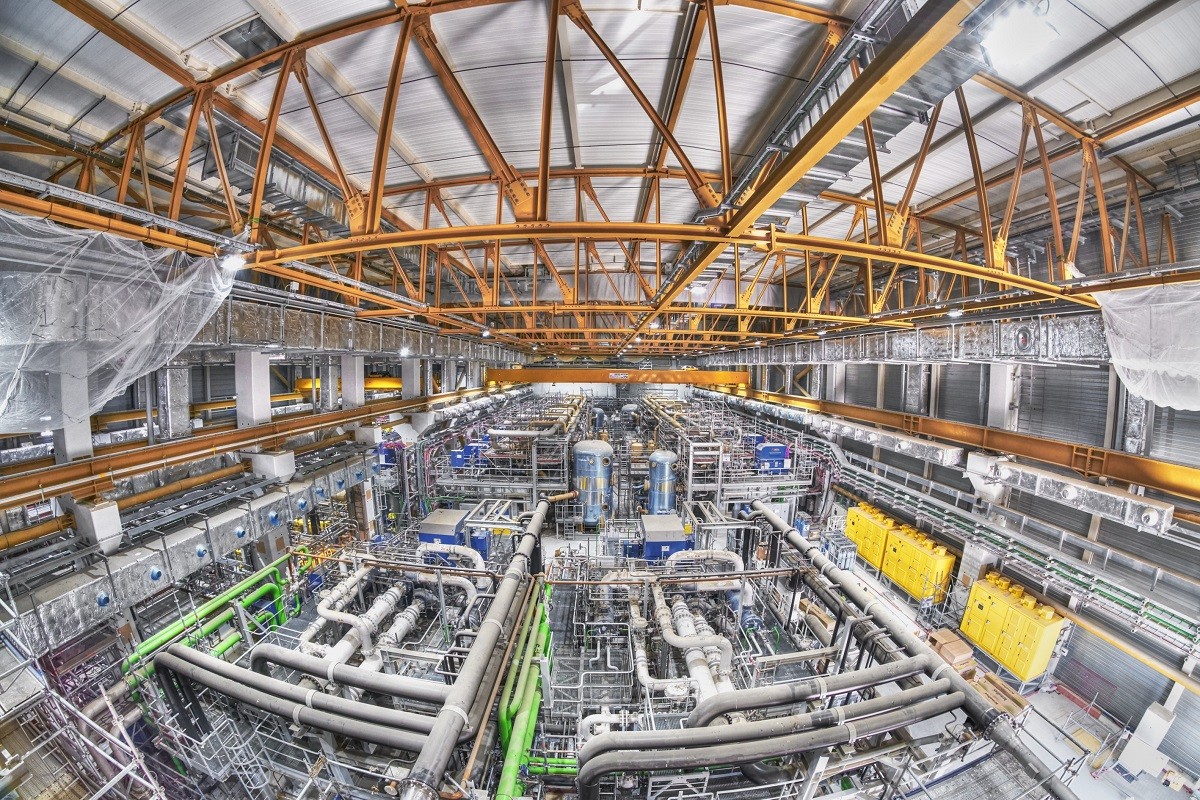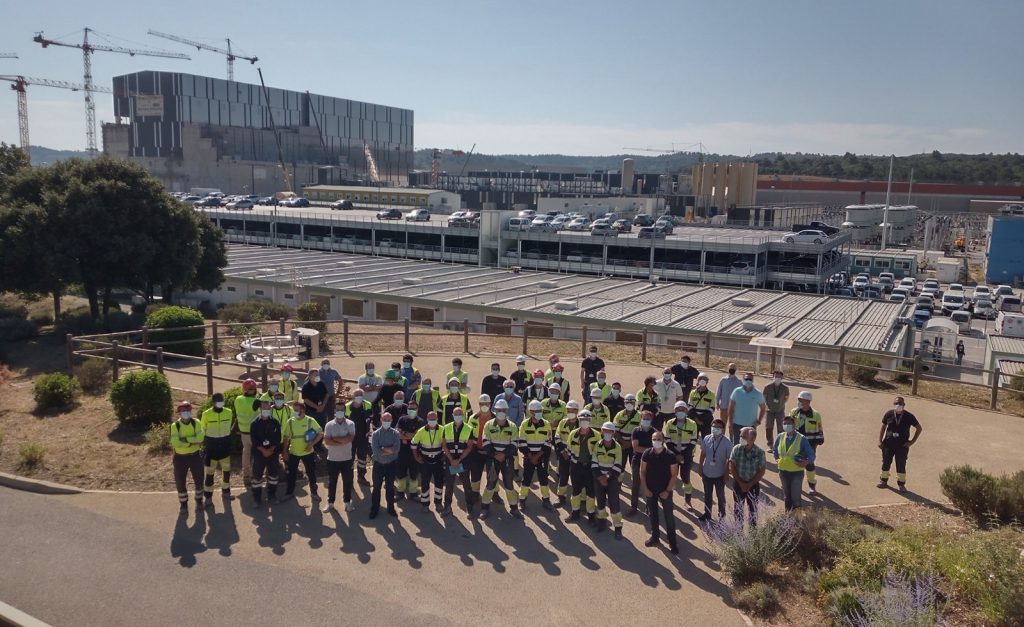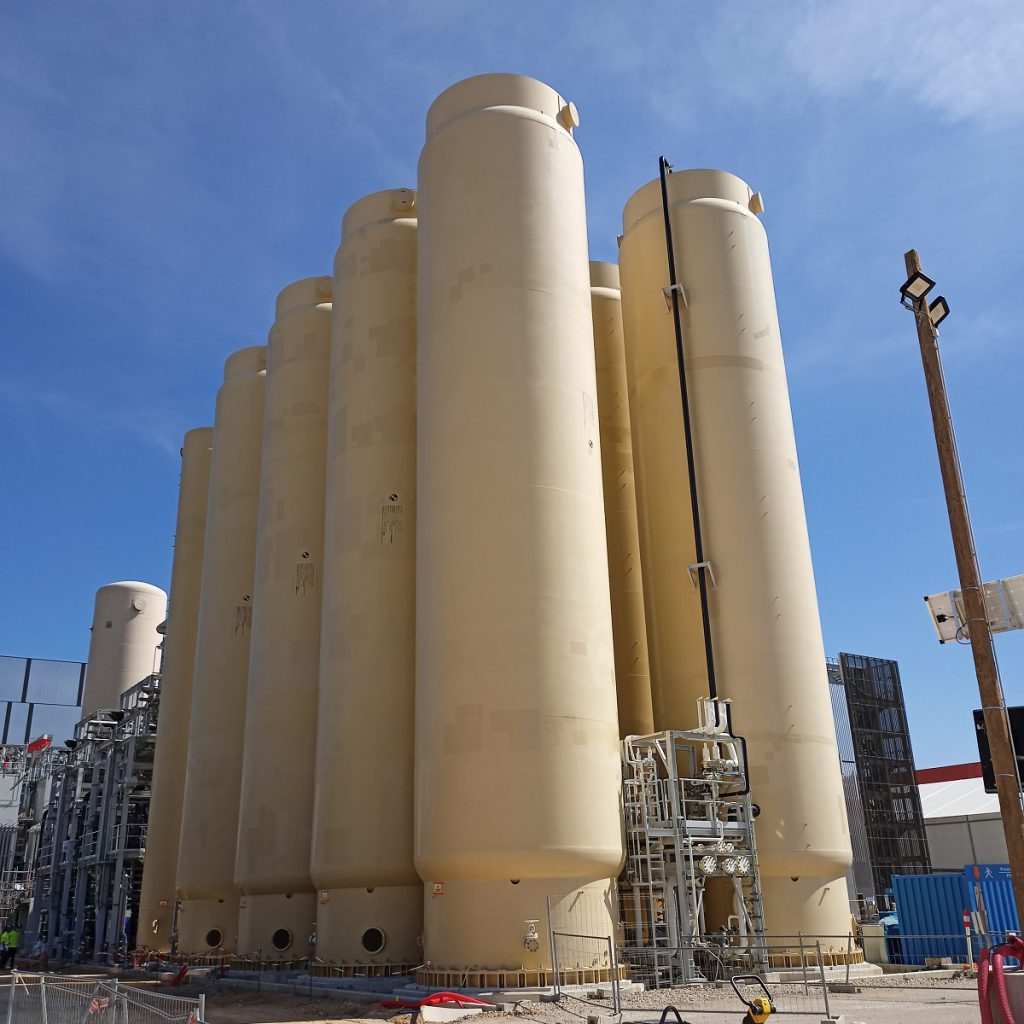ITER Cryoplant commissioning to start

The commissioning of the ITER Cryoplant is about to start. ITER site, France, March 2021. © Christian Lünig (www.arbeitsblende.de)
The cryoplant will provide the refrigeration needed by the superconducting magnets of the ITER device. After passing the final pressure tests, some documentation and minor checks remain in order to complete the mechanical acceptance of the plant. The commissioning of the facility is about to start.
Air Liquide is the main contractor that has dealt with most activities in the cryoplant. Recent tasks included installation of minor on-site equipment, laying, connecting and checking power and instrument cabling, amongst other things. IREM was subcontracted for mechanical works, and TCPI for electrical and instrumentation works. Both left the site in July, as their duties had come to an end.

Now the integrated F4E-ITER Organization Cryogenics Project Team, together with Air Liquide, are preparing the commissioning of the first set of the equipment. These are the six gas helium storages. Each of them is 24 m tall and 5 m in diameter and will contain 400 m3 of gas pressurised to 20 bar (the pressure of 20 atmospheres, approximately). Altogether, the helium contained in the six storages is enough for approximately 4 million party balloons.

Experts will have to replace the current gas filling the tanks –a so-called dry gas used for vessel preservation– with helium. As helium is a particularly expensive gas, engineers are leak testing the whole system to avoid losses. Next, they will evacuate the dry gas, flush the storage to get rid of any impurities and fill it with helium at high pressure. This is a long process, and will take several days to get the pressure inside the tanks low enough to fill them with “clean” helium. Once this is achieved, the gas helium storages will be ready for operation, and experts will commission other sets of equipment –such as the liquid nitrogen storages.
Grigory Kouzmenko, F4E Project Manager, explains the relevance of this phase in the overall development of the ITER Cryoplant. “Commissioning is one of the most interesting stages in the life cycle of any complex engineering equipment. I am glad that after so many years of design, procurement, manufacturing, assembly, factory testing and on-site installation we are finally on the verge of starting this phase, which will ultimately demonstrate the results of hard work of so many people from all over the world. I would like to express my gratitude to everyone involved for their efforts and dedication!”